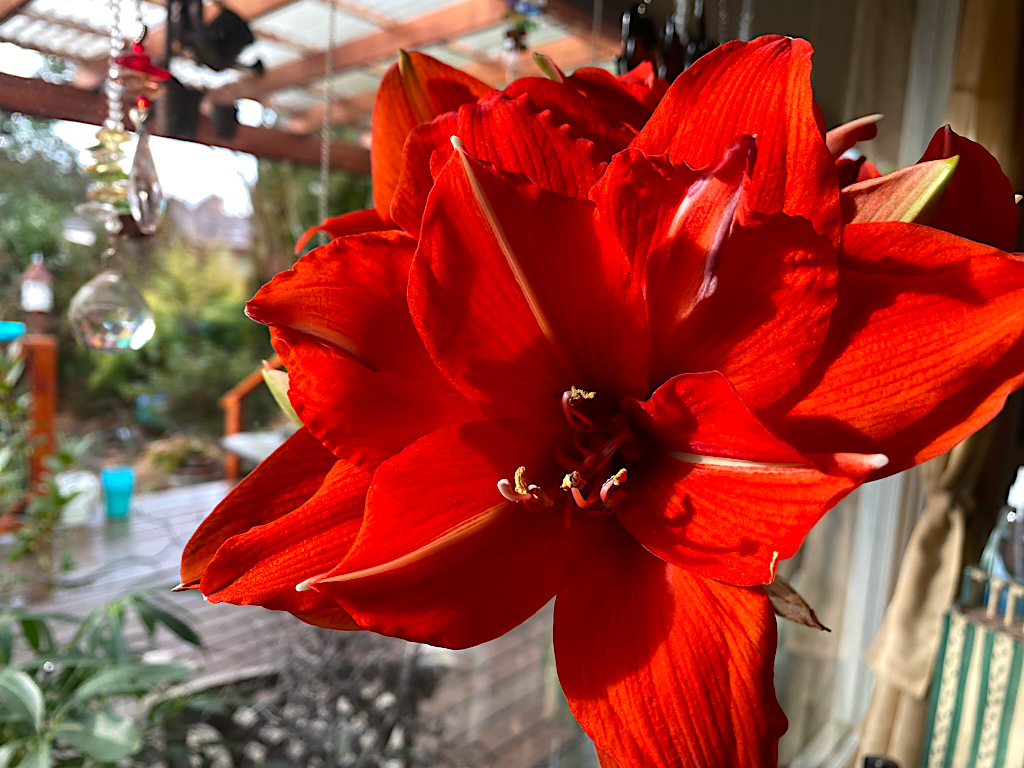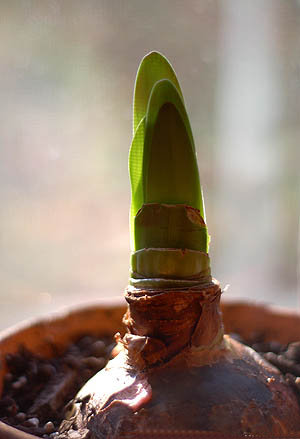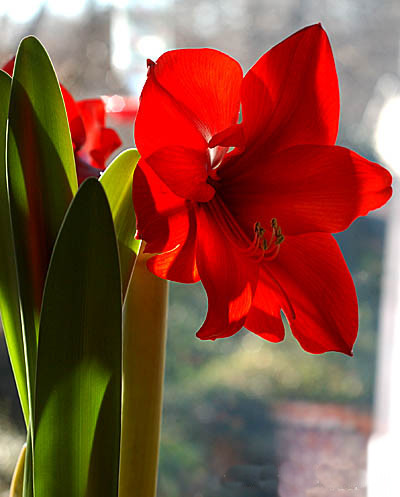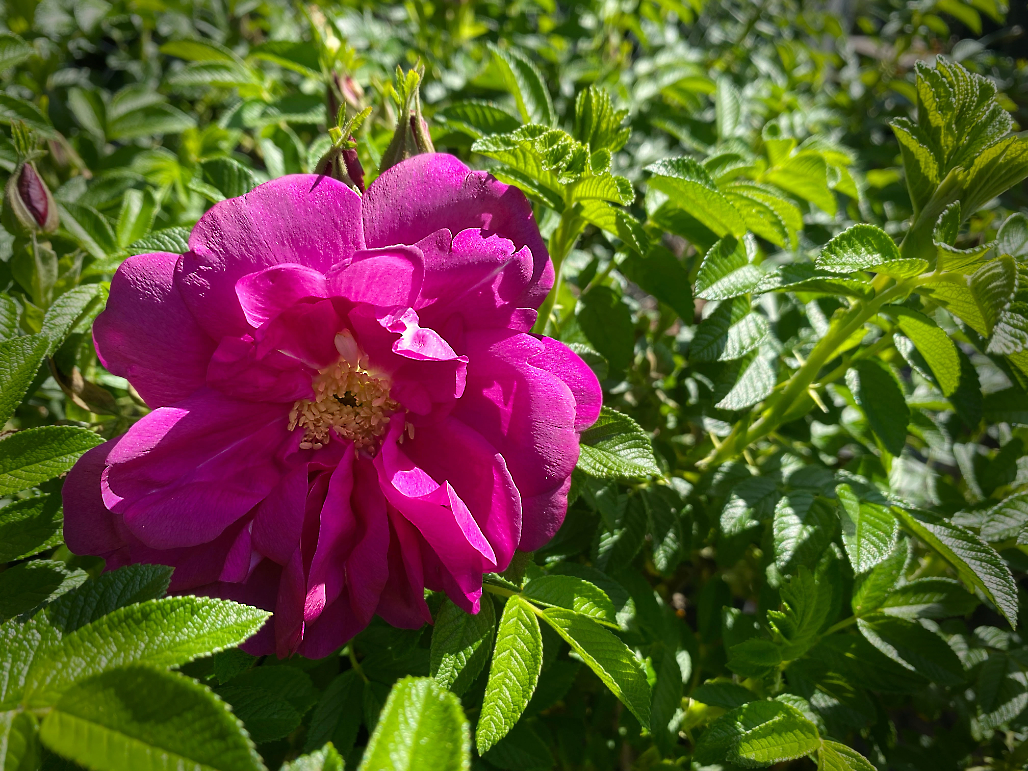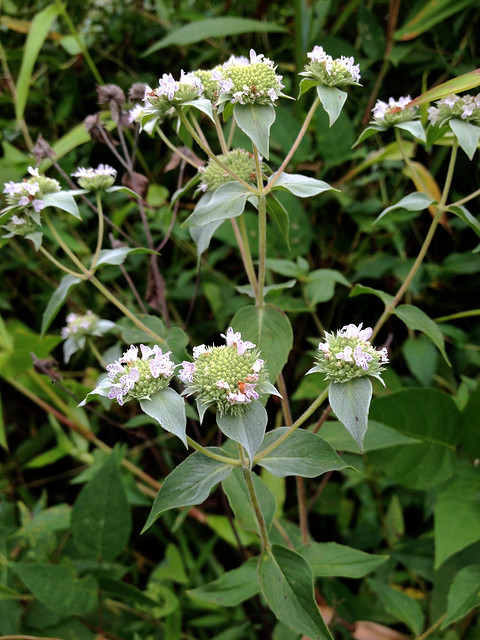Amaryllis
The stately amaryllis is one of the signature statements of the holiday season. These beautiful trumpet-shaped flowers provide color and elegance to the home and best of all, it is so much fun watching them grow.
Native to Peru and South Africa, “amaryllis” comes from the Greek word “amarysso” which means “to sparkle”.
The large bulbs of amaryllis can be purchased already growing in pots or as a bareroot bulb. When selecting bulbs, look for large and healthy-looking ones that are firm to the touch.
Planting
If you are potting the bulbs yourself, choose a container that is an inch wider than the bulb and twice as tall. They like to be rootbound. The container much have drainage holes. Any type of pot will do but I find that heavier ones, such as terracotta or ceramic, are best when the plants begin to bloom because they are top-heavy.
Position the bulb so that 1/3 to 1/2 of the top portion sits above the soil. A general, all-purpose potting mix is good. Press the soil lightly down around the roots and around the bottom portion of the bulb. Water it over a sink so that it gets thoroughly saturated after potting.
Select a bright spot in your home, preferably a window where it can get four hours of direct sunlight. South-facing windows are the best but east and west facing windows are good as well. When the amaryllis begins to bloom, move it a location out of the sun to prolong the blooms.
Watering
Water the amaryllis when the soil feels dry. Normally, a once-per-week watering is sufficient. The stalks will begin to grow upward at a rapid pace and blooms should begin to open 6-8 weeks after planting.
Fertilizing
After the stalks begin to grow, begin fertilizing with a liquid fertilizer. It is recommended that you use half the strength recommended on a weekly basis or full strength every two weeks. Choose a fertilizer with high phosphorous content (the middle number).
After Blooming
When the blooms begin to fade and the stalk yellows, cut it back completely. Move the pot back to a sunny location and continue to water and fertilize it. In the spring, after the danger of frost has passed, the pot can be moved outdoors to a sunny location. It is not necessary to remove the bulb from the pot. Continue to water and fertilize regularly.
In the fall, bring the pot back inside and keep it in a dark and cool location for eight weeks. Do not water or fertilize at this time. The stalks will turn brown and they should be cut back. After eight weeks, bring the pot back out again and repeat the cycle.
Our amaryllis are currently 40% off!

